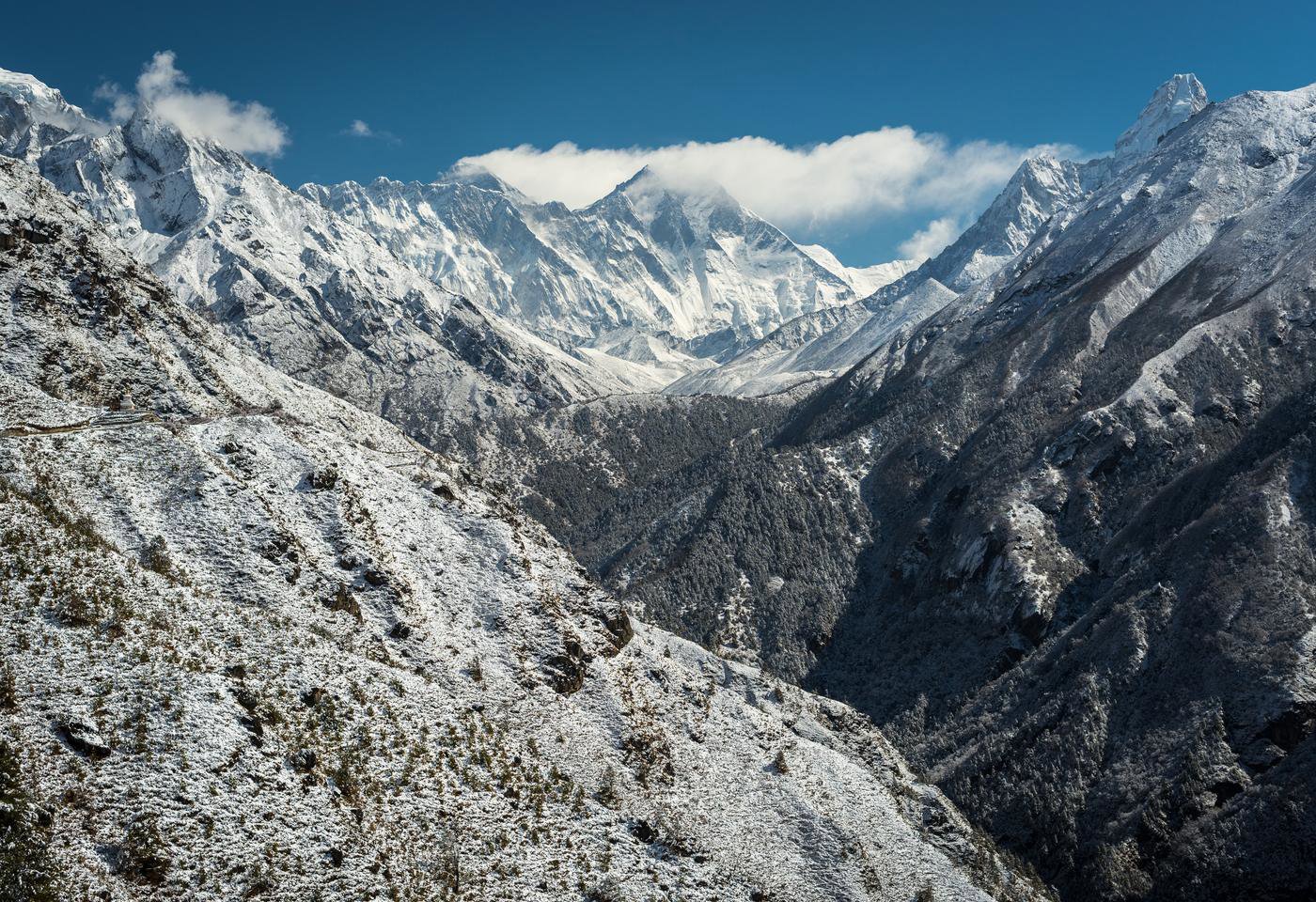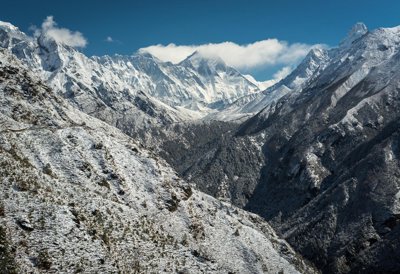Generating renewable energy from solar power has been a great resource but land for this purpose can come into conflict with other uses or receive opposition from those who don't enjoy the view. But can floating solar panels on water - which accounts for most of the surface of the planet - provide an alternative?
Tom Heap meets Mark Bennett, a farmer from Berkshire, who created a reservoir for soft fruit production and was curious to see if it had more potential. After a quick internet search he went to visit Ciel et Terre, a French company who were developing floating solar panels. He installed them for power at the farm and to demonstrate to others.
Meanwhile, the company founder Bernard Prouvost talks to Tom about the countries around the world which are adopting this, where he feels floating panels are appropriate and have the potential to partner with hydrodams.
Society Fellow and climate scientist Dr Tamsin Edwards assesses their carbon cutting potential.
What our experts say
We asked Society Fellows Dr Tasmiat Rahman from the University of Southampton and Grant Feasey from AES Solar to offer some observations on the potential of floating solar in replacing fossil fuel-generated power and reducing carbon emissions. Their points take some of the themes of the programme a step further.
 Dr Tasmiat Rahman
Dr Tasmiat Rahman
The solar energy research team at the University of Southampton, through support from the Global Challenges Research Fund, explored the use of floating solar to improve livelihoods of river island communities in Bangladesh. Locally known as Char dwellers, they are highly vulnerable to climate change, and suffer from annual floods and constant land erosion.
Access to clean, reliable power can be achieved through large-scale floating solar energy systems along the banks of the river islands. These have several key benefits over static, land-based systems. Firstly, as these are floating structures, they are more adaptable to the continually changing landscape and migration of communities from land erosion and flooding. Secondly, as these solar power systems are located on the river, they do not compete against agricultural farming for the densely populated and scarce land. Finally, the water bodies can provide cooling of the solar panel modules, which is of particular benefit for these islands that are situated on the Tropic of Cancer and thus exposed to high temperatures.
Energy modelling, based on survey data and semi-structured interviews with Char communities on energy usage across a wide range of livelihood, calculated that hybrid energy systems from floating solar could sustainably account for almost 80% of the energy needs of these islands, whilst halving the levelised cost of energy. This level of renewable energy penetration from floating solar would lead to a reduction of carbon emissions from livelihoods by 90%.
Key barriers to implementation include increased capital costs, increased operation and maintenance costs, impact on fish farming and the wider effect on the river ecosystem.
 Grant Feasey
Grant Feasey
Solar energy is a well-established means of generating energy with a global industry providing products for most applications you can think of at a cost that makes it one of the cheapest sources of electricity available. However, floating solar – locating solar arrays on water – has only recently begun to be exploited. The potential for extra deployment in areas with difficult terrain and water-based industries is huge if the barriers can be overcome.
AES Solar have supported Glasgow Caledonian University to produce a paper that outlines this potential in Scotland’s many water bodies. It will be used to canvass interest from industrial and academic partners, from potential investors and adopters and to lobby government to create favourable regulatory, business and innovation support conditions.
A follow-on study in partnership with The University of the Highlands & Islands is planned to explore the environmental impacts of floating solar relevant to important local industries like fish farming and water industry both positive and negative. The study will include the effects of temperature and light changes on the biodiversity that exists in Scotland’s water.
What are the limiting factors?
 Dr Tasmiat Rahman
Dr Tasmiat Rahman
As is the case with any emerging technology in the energy sector, the cost will be a key limiting factor. Capital costs are on average 25% higher than land based, due to additional costs of the floats, moorings, and cabling. Furthermore, operations and maintenance will also cost more, as they will be less accessible than ground mounted systems. Durability over decades is a key driver for investment in solar power. Therefore, potential degradation over time from constant floating movement resulting in microcracks, as well as corrosion from increased humidity, could also be a limiting factor for this technology.
 Grant Feasey
Grant Feasey
-
Planning restrictions
-
Acceptance by site operators and owners
-
Grid capacity
-
Appetite of site operators to invest
-
Environmental concerns – impact on local wildlife and ecosystems
-
Sites under special protection measures such as national parks or sites of scientific interest
-
Potential conflicts with other uses of water bodies
What are the co-benefits?
 Dr Tasmiat Rahman
Dr Tasmiat Rahman
The temperature at which solar panels operate will impact on how much power it produces. For example, a panel operating at 25°C will produce 4% more power than the same panel operating at 35°C. Therefore, temperature cooling from the water bodies can help floating solar produce more power and slow down degradation associated with overheating. These will both contribute to a reduction in the levelised cost of energy, and potentially make this a more affordable energy technology solution. Another co-benefit is that floating solar reduces conflict for land. This is particularly beneficial for densely populated countries which are heavily dependent on agricultural exports, as well as small islands suffering from land scarcity and erosion.
 Grant Feasey
Grant Feasey
-
Cooling effect of water: photovoltaic (PV) modules operate more efficiently at lower temperatures. Floating photovoltaic (FPV) systems could operate at 11% higher operating efficiencies than ground-mounted systems due to location characteristics.
-
Mounting on water allows optimum pitch and orientation to be achieved without shading much more easily than on land or buildings so kilowatt-hour per capital expenditure (kWh/£CAPEX) is maximised.
-
The consistent surface of inland water offers the potential for more affordability and price predictability than ground mounted options that can often present costs and risks in the form of rugged terrain and unknown subsurface make-up.
-
Prevention of algal blooms: previous studies have shown that the water-shadowing effect naturally provided from the buoyant structure, could limit the production of algal blooms, and contribute to water quality enhancement. That is caused by reducing the temperature of water bodies in the summer months.
-
Possible positive effects on subsurface flora and fauna through light and temperature reduction.
-
Moorings can provide new habitat for marine life.
Are there any potential negative impacts of this idea?
 Dr Tasmiat Rahman
Dr Tasmiat Rahman
The reduction of sunlight into the water can be detrimental to the aquatic ecosystem, as this will reduce photosynthetic activities within the water body and impact the biogeochemical cycles. This can trigger losses both in microscopic and aquatic plants, which other forms of aquatic life and birds need for survival and culminate in losses in farming and livelihoods. The positioning and orientation of solar modules is key to ensuring sufficient light exposure to the water body and thus minimising the negative impact on the aquatic systems.
 Grant Feasey
Grant Feasey
-
Evidence suggests that the shadowing effect of a buoyant structure may limit the reproduction of fish populations when the total area of water bodies is covered by 40% or more.
-
Shading could have an impact on sub-surface flora (however, it could also be positive).
-
Mooring and anchoring systems could have impact on biodiversity - must be carefully designed and considered.
-
Materials used in fabrication must be carefully considered to avoid those that might degrade into environment or otherwise cause harm.
Further reading
-
Chateau, P., Wunderlich, R., Wang, T., Lai, H., Chen, C. and Chang, F. 2019. Mathematical modeling suggests high potential for the deployment of floating photovoltaic on fish ponds. Science of The Total Environment, 687, pp. 654-666
-
Exley, G., Armstrong, A., Page, T. and Jones, I. 2021. Floating photovoltaics could mitigate climate change impacts on water body temperature and stratification. Solar Energy, 219, pp. 24-33
-
World Bank Group, ESMAP and SERIS. 2019. Where Sun Meets Water: Floating Solar Market Report. Washington, DC: World Bank.
About the series
39 Ways to Save the Planet is a new radio series by BBC Radio 4 developed in partnership with the Society and broadcast in 2021. It showcases 39 ideas to relieve the stress that climate change is placing on the Earth. In each 15 minute episode Tom Heap and Dr Tamsin Edwards meet the people behind a fresh and fascinating idea to cut the carbon.
Over the course of 2021, the Society will be producing events and digital content to accompany the series.
Episode 33: Floating solar power

Featured card image: BBC
Featured banner image: Tampatra/Adobe Stock
Using this base of evidence and with the consortium of stakeholders we have established, we will be pursuing innovation funding to establish a full scale prototype system in a Scottish water body. The development of the prototype will provide an opportunity for engineering optimisation, close study of the in-life performance of the system and the opportunity for academic specialists to study the environmental effects in a real-world situation. The UK based specialist knowledge and experience will aid deployment worldwide.
